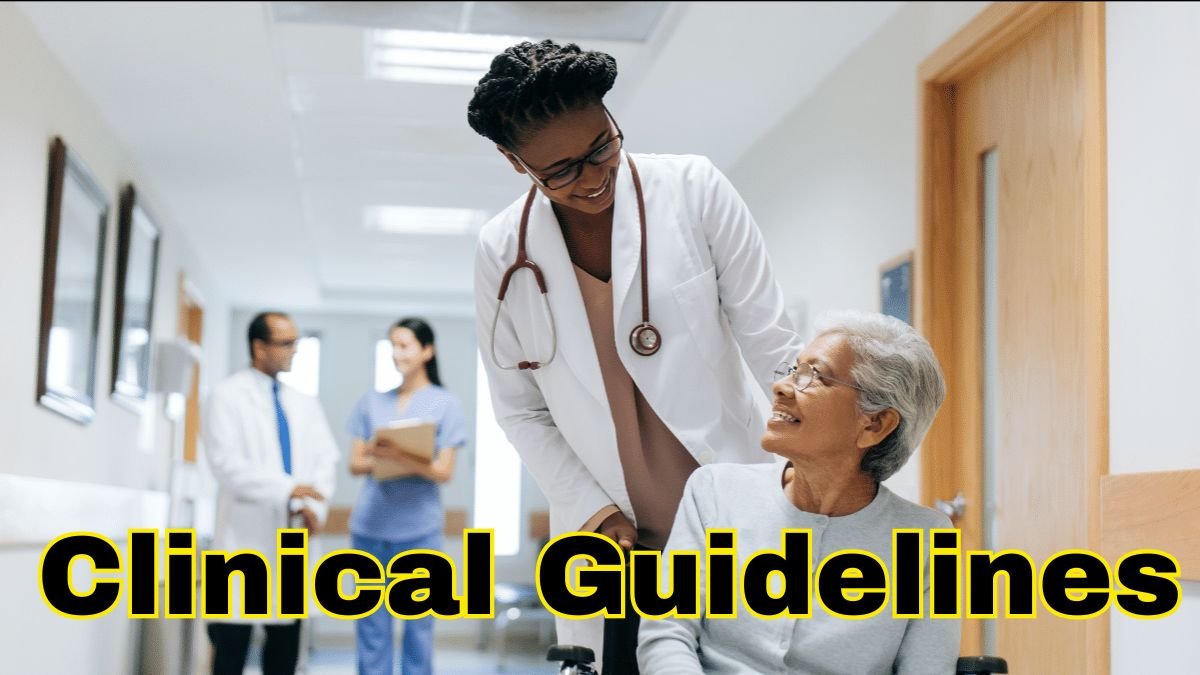The world of health and medicine is constantly evolving. New research, medicines, and treatments challenge doctors and health professionals to make their decisions more accurate and effective. This is where evidence-based clinical guidelines play a crucial role.
These guidelines are not just theoretical rules, but recommendations derived from extensive research, clinical trials, and real-world experiences. Their purpose is to ensure that every patient receives the safest, most effective, and most appropriate treatment.
In this article, we will explain in detail what these guidelines are, how they are developed, and how they help improve patient outcomes.
What are evidence-based clinical guidelines?
Simply put, these are instructions or standards (protocols) that guide doctors and health care professionals about the best treatment for a particular disease or condition.
- They are not based solely on the opinion of one person.
- They are based on research, scientific evidence, clinical trials, expert experience, and patient needs.
- Their goal is better decisions, fewer mistakes, and quality healthcare.
Why are these guidelines needed?
Medicine is a complex field. New discoveries and research emerge every day. Consequently:
- It’s impossible for every doctor to keep all information up-to-date.
- Sometimes, different treatments are available for the same disease, making decisions difficult.
- Without standardized guidelines, treatment can vary, potentially affecting patient outcomes.
Evidence-based guidelines address this problem. They provide healthcare professionals with a clear roadmap and ensure patients receive the best treatment.
How are evidence-based guidelines developed?
Developing these guidelines involves a lengthy and scientific process:
Research and data collection:
Thousands of research papers, clinical trials, and anecdotal experiences are collected.
Analysis:
Experts determine which research is most reliable and authoritative.
Expert Committee Review:
Doctors, researchers, and policymakers from various fields collaborate to draft guidelines.
Public and Professional Feedback:
Final guidelines are shared with the healthcare community for feedback before they are issued.
Public and Implementation:
After approval, they are implemented in hospitals, medical colleges, and clinics.
Their Positive Impact on Patients
Now the question arises—what benefits do patients gain from these guidelines?
More Accurate Diagnosis
When doctors follow evidence-based guidelines, the likelihood of correctly diagnosing a disease increases.
Better and Effective Treatment
Guidelines specify which medication, what dosage, and for how long to take for each disease. This can prevent overtreatment or undertreatment.
Guaranteed Safety
They protect patients from unnecessary or harmful treatments.
Equity
Guidelines ensure that every patient, whether in a big city or a small town, receives the same quality of treatment.
Better Long-Term Outcomes
Relapses are reduced and patients’ quality of life is improved.
Let’s illustrate this:
Suppose a patient has heart disease.
- If doctors treat based solely on their experience, medications or procedures may vary.
- But if they follow evidence-based guidelines issued by organizations like the American Heart Association, patients will receive equal and safe treatment everywhere.
- This increases the patient’s chances of survival and reduces mortality.
Benefits for Doctors and Healthcare Professionals
These guidelines are a great support not only for patients but also for doctors.
- Easy Decision Making: Accurate and quick decisions are possible.
- Reliability: Patients and their families have confidence that the treatment is scientifically based.
- Time savings: Trial-and-error can be avoided and the correct treatment can be started immediately.
Challenges and Limitations
Although these guidelines are extremely useful, some challenges still exist:
- Identical guidelines may not work for every country or region, as resources and circumstances vary.
- Some doctors are hesitant to adopt them because they prioritize their experience.
- Continuously emerging research makes it important to update guidelines periodically.
Future Directions
In today’s digital world, artificial intelligence (AI) and big data are making these guidelines even faster, more accurate, and personalized.
- Customized clinical guidelines will soon be available based on a patient’s age, history, genetic profile, and lifestyle.
- This will make treatment even more effective and personalized.
Conclusion
Evidence-based clinical guidelines are the backbone of medicine. These not only make patients’ lives safer but also improve the quality of healthcare.
Their greatest advantage is that they combine science, experience, and patient-centered care. As a result, not only does patient treatment improve, but the standard of healthcare in society also improves.
In the future, as research and technology advance,These guidelines will become even stronger and make medicine more human-centered and safe.
